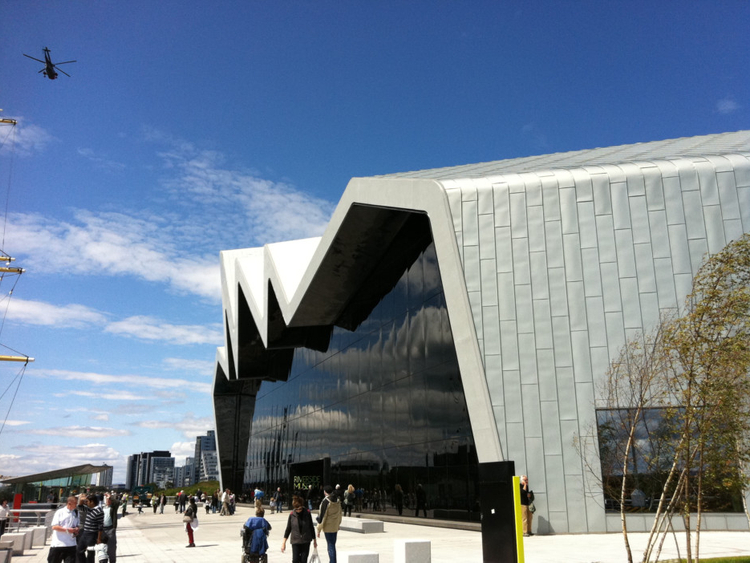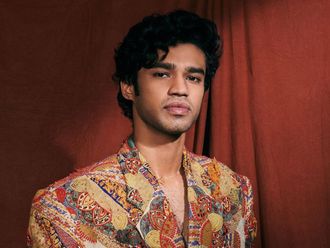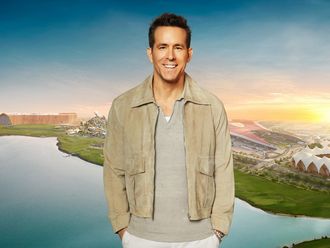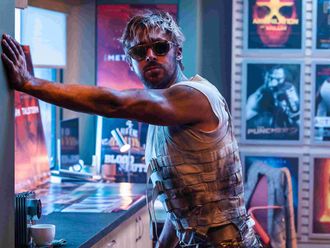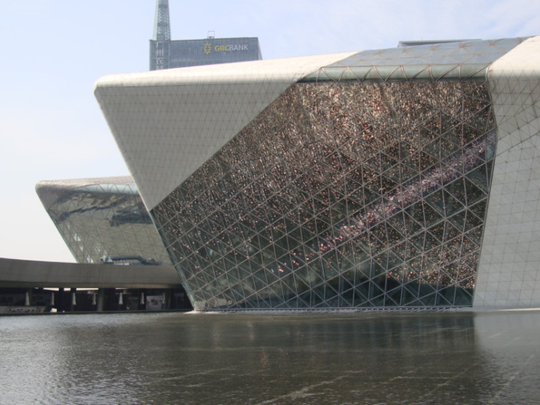
Drive around in London, Rome, Guangzhou, or Glasgow, and you will experience, in a continual evolutionary sweep, the range of her architecture. From London’s Aquatics Centre, or Glasgow’s Riverside Museum, to Rome’s MAXXI gallery or Guangzhou’s Opera House, Zaha Hadid has pushed boundaries of what’s possible in more than 46 buildings dotting the globe — a reminder of her tactile and sensory concepts.
“My ambition has always been to create fluid space, because it visually simplifies everything. People do ask, ‘Why are there no straight lines, no 90 degrees in your work?’ This is because life is not made in a grid,” says the Iraq-born British architect. “Natural landscape is not even and regular, but people find it very relaxing. I think that one can do that in architecture as well.”
Since her first project in 1993 — a fire station in Weil am Rhein, Germany — she’s been through a rollercoaster of daring architecture for museums, galleries, cultural centres, offices and factories. Arguably, her design defines rather than occupies space.
She enjoys her success, and her patrons enjoy the association with what has become one of the world’s leading brands.
Need a new stadium or a museum? Call Hadid on the Starchitect Hotline.
But for all her positivity, Hadid admits that earlier in her career she struggled in the very male-dominated worlds of planning and construction. She makes no bones about the fact that she got where she is today through hard work and determination.
“I am a woman, I am an Arab, and I am an architect,” she says, “biology and geography have defined the first two, but the third has taken 40 years of hard work. For a large part of those years, some of the biggest difficulties that I faced were brought about not by my work, but by my existence as a woman, or as an Arab, or indeed, as an Arab woman. I’ve learnt to never give up. I’ve achieved some success, but it’s been a very long struggle.”
Hadid, who is a guest lecturer at The University of Applied Arts, Vienna, says though many of her best students are women, quite a few leave the profession later. There is more work to be done on achieving a level playing field, she says.
“The numbers of male and female architecture students are equally balanced, but only about 20 per cent of qualified architects are women. In the later years of study and then professional work, women leave the profession. Society has not been set up in a way that allows women to go back to work after taking time off for family. Many women now work as well as do everything at home and look after the family, and no one can do everything! We need to find more ways to help women.
“Architecture is a very tough profession; it is very important to persevere. As a woman, you need the confidence ... I’ve always believed in my work and know that it will carry me through any difficult situation,” says the acclaimed architect, adding that things have changed over the past 15 years, but it is not uncommon to encounter scepticism.
“You now see more established women architects but that doesn’t mean it’s easy. Sometimes the difficulties are incomprehensible. In practice, I still experience resistance. It’s not as if I just appear somewhere and everybody says ‘yes’ to me. Despite having gone through it a hundred times, it’s still a struggle. It’s not necessarily always great, but it makes you think and do things in a different way. It’s made me tougher and more precise ... and maybe this is reflected in my architecture.”
Interestingly, although there are no direct formal references to her cultural roots in her work, Hadid says she’s fascinated by the “mathematics of the Arabs”.
“I became interested in geometry while studying mathematics at the American University in Beirut. I realised there was a connection with the logic of maths to architecture and the abstraction of Arabic calligraphy. The fluidity and calligraphy in my architecture is an evolution of this research.”
Four decades in the business and the 64-year-old’s achievements can safely be described as stellar. “Quite consciously, we are expanding our repertoire and doing different things in different contexts, ensuring each project has the strongest possible relationship with its unique environment.”
Reassuringly level-headed, she undercuts her own ability to take credit for the buoyancy of her firm, Zaha Hadid Architects. “Architecture is certainly not a solo act. I have a wonderful team that worked with me for many years and has contributed to the success.”
Nevertheless, critics have occasional reservations about her work, especially the sinuous sporting stadiums in Qatar and Tokyo. While Al Wakrah stadium has been said to resemble a certain part of the female anatomy, overwhelming the environment in which it appears, the exuberant space-age design of 2020 Olympic Games in Tokyo had be scaled down after being slammed as a “monumental mistake”.
Dismissing Qatar stadium’s resemblance as “embarrassing”, she says the Tokyo stadium is user-focused and sustainable well beyond the 2020 Olympic Games. “It will give the people a much-needed venue of the highest standards for use by many future generations of Japan’s sporting bodies and community associations, their millions of members, participants and fans.”
Is there a part of her that enjoys the friction and the polemicising? Famed for head-turning buildings, the two-time winner of the Stirling prize and the first woman to win the Pritzker prize, tackles the question with quieter mastery, undoubtedly persuasive.
“With so many different stakeholders and user groups involved in each project, large scale public buildings will always provoke opinion on both sides of the debate. It is not unusual, but shows a healthy level of engagement from the community. Unlike earlier, as an architect, your client is no longer a single person or type of person ... the client today is everyone. This has been really exciting and adds to the richness of civic space,” she says.
Brickbats and adulation aside, an occupational hazard, a price of success to her, it can’t be denied Hadid has left her imprint in most parts of the world, including the UAE. After the Shaikh Zayed Bridge in Abu Dhabi, she’s making a comeback with Bee’ah’s new Headquarters building in Sharjah, which is designed as a series of intersecting dunes orientated to optimise the prevailing winds, daylight and views.
“Bee’ah is converting waste from consumptive by-product of society to something that can be core to society’s future. As such, the environmental considerations have been woven into every aspect of the design to limit the need to consume resources.” It is scheduled for completion in 2018.
Meanwhile, the other emirate, the epitome of the vertical city that just keeps growing into the sky in an exhilarating adventure in stone, steel and glass, conveys a “remarkable message of optimism for the Arab world”, according to Hadid.
“Dubai is demonstrating the highest degree of ambition and commitment, together with a genuine pride in the structure of the city. Surely that’s a good thing. In terms of urban planning, while its ambitious designs have pushed the envelope, it has learnt through experience it is critical to also implement the essential social and civic infrastructure.”
But it is the “mixture of East and West” in Istanbul that makes it her favourite city. “I fell in love with how complex Istanbul is. There are so many rich layers to the city. I never tire of going there as it’s full of unexpected treasures. The whole thing is like a fantastic collage of cultures. I like these hybrid cities along great rivers; they remind me of the Baghdad of my youth.”
It’s been for more than four decades that she made London her home, yet the violence, loss of lives and destruction in Iraq hurts her much. “What’s going on now is very sad. I still remember my days in Iraq with my family. As a child, we used to take along picnics for trips to the ruins of Samarra, in the Garden of Eden, where the rivers Tigris and Euphrates meet in southern Iraq. You see the river landscapes and you realise that it was like that even 10,000 years ago. That timelessness is very endearing.”
Hadid’s now looking forward to returning with some “exciting projects”. “Unfortunately I have no family left in Iraq. My parents are no longer alive, so when I return, it will be very emotional ... I’m deeply touched to be contributing to rebuilding Iraq, but it requires more than individual buildings. The country needs well-conceived urban planning with public institutions, housing, schools, hospitals and major infrastructure.”
And nothing is more interesting to her than collective research culture in architecture that allows diverse talents and innovative ideas to feed off each other, and create a sustainable society. With over 50 per cent of the world’s growing population now living in cities, Hadid says, contemporary urbanism and architecture must move beyond the outdated repetitive orthogonal block. As an architect, she says, part of her job is to make people feel good in the spaces where they live or work. “Social housing, schools, hospitals and other vital civic infrastructure have always been based on the concept of minimal existence ... that shouldn’t be the case today. Architects now have the skills and tools to address the complexities and dynamism of our lives today, to explore new concepts, and construct buildings that integrate and adapt to the needs of modern living.”
Transcending ideas, creating new spatial paradigm — from opera houses to parliament buildings — is there any particular project that’s close to her heart? “That’s like asking a parent who is their favourite child. Each project is a unique solution to its own particular situation, each represents different periods of my career, and as such I’m equally proud of all of them. But I will always have a particular affection for the Vitra fire station — my first building.”
True to form, her artistic repertoire is beyond buildings. She has tackled everything from shoes to furniture and jewellery, putting her distinctive stamp on each — bold and dramatic. She considers it a part of her ongoing design investigation.
“In terms of form, all our projects interest me equally, but I greatly enjoy fashion collaborations. They provide an opportunity to express my ideas through different scales and media. It is essential to find key collaborators to work on new discoveries and push them into the mainstream,” says the architect who hobnobs with A-list friends such as Karl Lagerfeld.
Unsurprisingly, the shoes she designed, especially for avant-garde shoemaker Rem D. Koolhaas, have the look of futuristic buildings — stacked high and cantilevered.
“These fashion projects convey the mood of the day, of the moment, like music, literature and art. One of the most satisfying things about working with these fashion houses are the techniques used for design and manufacture — and the production process between idea and result is so much quicker as compared to architecture,” she says.
“This faster timeframe leads to greater opportunities for experimentation. Particularly in the design of a shoe where we had the possibility to create real prototypes very quickly and evaluate the design and comfort.”
Back from the naming ceremony of the new Middle East Centre at Oxford University — another of her work of artistry and structural ingenuity — Hadid, apologetically workaholic, has just raised the bar for leading architects everywhere. So what’s next? “I would love to sleep, but my team in the office won’t let me. They always find something to tell me on the phone, usually at two in the morning.”
Suparna Dutt-D’Cunha is a writer based in Pune, India.



